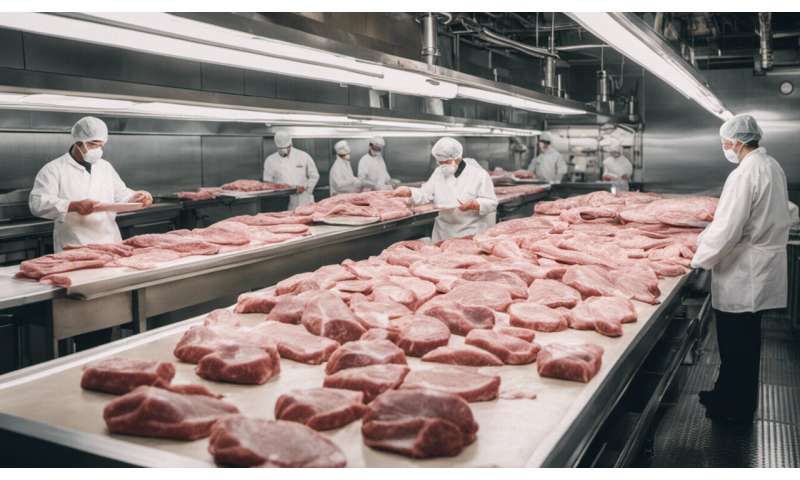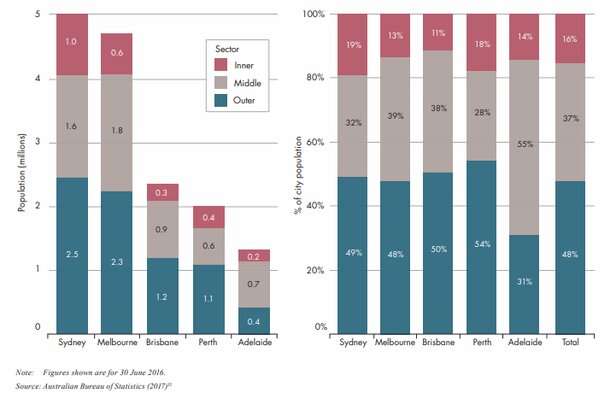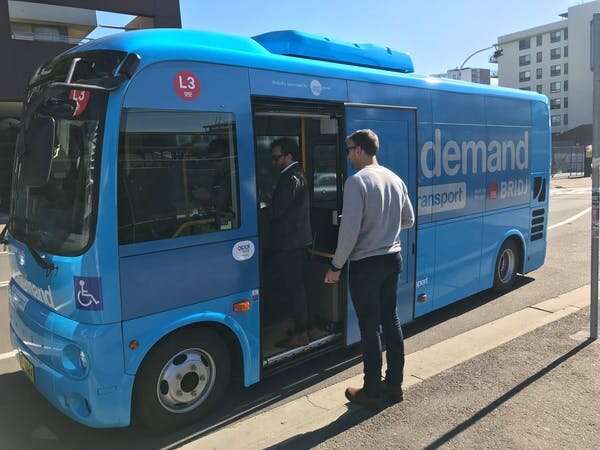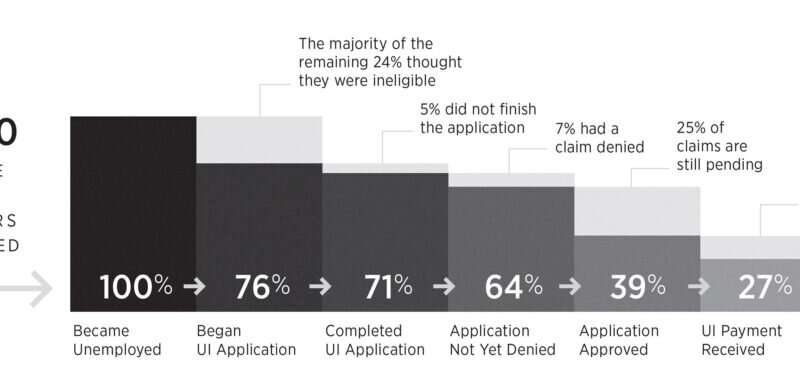Study shows whole-fruit vitamin C boosts feelings of vitality
by Mark Hathaway, University of Otago
 Credit: Pixabay/CC0 Public Domain
Credit: Pixabay/CC0 Public Domain
A University of Otago study has shown adults low in dietary vitamin C can improve their feelings of vitality by eating two kiwifruit a day for two weeks.
The study highlights the advantages of ingesting vitamin C through whole fruits such as kiwifruit. Observed effects were more marked than in a matched population taking vitamin C predominantly through a supplement tablet.
Researchers from Otago's Department of Psychology (Dunedin) and the Center for Free Radical Research in Christchurch ran a placebo-controlled intervention to test whether increasing vitamin C through whole fruit or tablets can improve feelings of vitality or zest for life.
They recruited 167 participants between 18 to 35 years-old who had low baseline levels of vitamin C and randomly divided them into three groups; a kiwifruit group, an equivalent vitamin C tablet group (250 mg), or a placebo-tablet group. Each day for four weeks, participants were asked to eat two Sungold kiwifruit (a fruit known to be exceptionally high in vitamin C) or consume their tablet. Blood vitamin C levels and questionnaire measures of mood, fatigue, and well-being were measured fortnightly throughout the study.
Results showed vitamin C levels in both the kiwifruit group and vitamin C tablet group increased to normal within two weeks. There was no placebo effect. A key finding however was the extra benefits to vitality reported by the group taking kiwifruit.
"Whole fruit had a broader range of benefits; lessening fatigue and improving mood and well-being across a wider number of people than we saw in the supplement group. The vitamin C tablet did decrease fatigue and improve well-being to some extent for individuals with consistently low vitamin C levels leading up to the intervention. Interestingly, the benefits from consuming kiwifruit emerged in just 2 weeks," lead author Associate Professor Tamlin Conner says.
Vitamin C has many functions in the body and brain, and increases the production of numerous hormones and neurotransmitters. These include adrenalin, serotonin, and oxytocin that control stress levels, regulate mood, and promote feelings of well-being. Co-investigator Professor Margreet Vissers says while links between vitamin C and physical functioning are well-documented, this study establishes a role for vitamin C in mental functioning. The study also suggests that whole fruit intake promotes added benefits to mental function.
Dr. Conner says by raising vitamin C levels through whole foods like kiwifruit, people can get other active ingredients that will benefit more systems in the body and brain.
"For example, kiwifruit has numerous additional vitamins and minerals that support health and are also high in dietary fiber, which is beneficial to the gut. There are important links between the gut and the regulation of mood. This could account for why kiwifruit benefited mood more than vitamin C tablets."
The study, "KiwiC for Vitality: Results of a Randomized Placebo-Controlled Trial Testing the Effects of Kiwifruit or Vitamin C Tablets on Vitality in Adults with Low Vitamin C Levels," has been published in the open access journal Nutrients.
Explore further
Mental accounting is impacting sustainable behavior
by University of Geneva

Credit: CC0 Public Domain
Mental accounting is a concept that describes the mental processes we employ to organize our resource use. Human beings tend to create separate mental budget compartments where specific acts of consumption and payments are linked. This mechanism can be counter-productive when it comes to energy consumption and can have a negative impact on attempts to reduce carbon emissions. Psychologists from the University of Geneva (UNIGE), working in collaboration with the University of Applied Sciences and Arts in Western Switzerland (HES-SO Valais), have published a perspective in the highly influential journal Nature Energy. The article links theories and research on mental accounting to energy and sustainability behavior, proposing concrete strategies to improve the impact of climate-control measures.
Mental accounting, a concept known by psychology researchers since the 1980s, describes how the human mind functions when performing acts of consumption. For instance, someone who has bought a cinema ticket in advance but who cannot find it on entering the cinema will typically not buy a second ticket: their film budget has already been spent! This example illustrates our tendency to mentally segment our budgets and link them to specific acts of consumption. "These basic cognitive mechanisms can help us better understand unsustainable behavior. If they are taken into account, they could be used to fine-tune the way policy instruments are designed to fight climate change, improve prevention and promote sustainable behavior," begins Tobias Brosch, professor in psychology of sustainable development at UNIGE's Faculty of Psychology and Educational Sciences and the Swiss Centre for Affective Sciences. "For this article, we used the currently ongoing discussions around the carbon tax to illustrate the impact of three mechanisms of mental accounting on behavior and to propose ways to circumvent this impact."
Justifications, rebounds and labels
The spillover effect refers to the fact that we tend to justify one behavior by another of our behaviors. "Someone who makes the effort to cycle to work every day will use this argument to justify, to himself or others, buying a plane ticket to go on holiday to the Seychelles. A possible intervention strategy to prevent this is to encourage people to create differentiated mental accounts using targeted messages," states the psychologist.
The rebound effect explains how actions can induce a negative energy balance when people fail to adapt their budgets to a new situation. For example, people who buy an energy-efficient car may feel inclined to use it more often, canceling out potential energy savings. To tackle this phenomenon, the psychologists suggest informing people about the real energy costs of their new car so they can update their consumption budget.
Our minds create mental accounts with precise labels. The mental account that is opened when we receive a sum of money in a specific context determines what the money will be spent on. "A monetary gift received for a birthday will be labeled 'pleasure," and will most likely be spent on pleasurable experiences," says Professor Brosch by means of illustration. This can be problematic in the context of sustainable decision-making. For instance, the financial returns on solar panels installed at home appear only indirectly in the electricity bill and are not explicitly labeled as "energy saving." Accordingly, people will not necessarily think about reinvesting this money in new sustainable measures. "Clear labels are needed. In Switzerland, part of the carbon levy is returned to citizens via a reduction in health insurance costs. It would be better to label such an income "Climate action revenue,'" argues Tobias Brosch.
Take the right measures but don't forget your values
The analysis carried out by the psychologists proposes concrete measures aimed at the political sphere so that pro-climate initiatives can be improved by factoring in human behavior. "We need to clearly show the price of energy, make the message salient, and demonstrate the impact of consumption on CO2-emissions through concrete feedback," says Ulf Hahnel, senior researcher at UNIGE and first author of the study.
The approaches developed in the perspective help conceptualize spending and diversify mental accounts so that individuals can better adapt their behaviors. But Hahnel warns: "Be careful to consider your values and not to fall into purely marketing-based initiatives. You cannot put sustainability labels on just any tax credit." "Bounded rationality, including mental accounting, can help introducing innovative policies for climate change mitigation in addition to price-oriented ones," adds Valentino Piana, senior economist at HES-SO, who contributed to the study.
Professor Brosch says, "Our work helps to understand behavior, how humans make choices and take decisions. Our goal isn't to abolish free will, but to provide a behavioral toolbox. Policymakers can use this knowledge to develop strategies based not just on scientific evidence, but also on ethical considerations."
Explore further
What we've learned from COVID-19 outbreaksCredit: Shutterstock
From the United States to Brazil, Britain, Germany and Australia, meat-processing plants have played a peculiar role in spreading COVID-19.
In Brazil, union officials allege one-fifth of the industry's employees—about 100,000 meat plant workers—have been infected. In the US, meat-processing facilities have been linked to more than 38,500 cases and at least 180 deaths. Meat works made up almost half of US COVID-19 hotspots in May. They were also the major initial source of infections in Australia's June "second wave" outbreak in the state of Victoria.
One reason for these transmissions is that meat processing takes place in confined refrigerated spaces. But the fact the industry has not been linked with large viral outbreaks in all countries and regions suggests other, controllable factors have also been instrumental.
The fundamental lesson from these outbreaks is that unhealthy working conditions and precarious work need to be addressed to stop the meat industry acting as an incubator of COVID-19.
Unhealthy work conditions
Past studies have shown influenza and other coronaviruses (SARS and MERS) are more stable and therefore spread more easily in lower temperatures. Though lower temperatures have not yet been conclusively proven to increase COVID-19 transmissions, Australian researchers have identified an association with lower humidity.
This alone increases the risk to meat-processing workers, who perform strenuous manual labor on a production line in relatively close proximity to others. But that risk is compounded by other factors—particularly poor air quality contributing to respiratory illness, which makes any COVID-19 infection more severe.
As noted by the US Occupational Safety and Health Administration, among the "many serious safety and health hazards" long associated with meat-processing work are "biological hazards associated with handling live animals or exposures to feces and blood which can increase their risk for many diseases".
A 2017 study found respiratory disorders such as coughing, breathlessness and wheezing three to four times more prevalent among slaughterhouse workers than office workers. Among poultry workers, a 2013 study found more than 40% had asthmatic symptoms (compared with about 10% of all adults). This was attributed to "poultry dust", a biologically active combination of chicken residue, feathers and molds.
Insufficient ventilation makes the spread of the coronavirus 20 times more likely, according to a report published by the European Federation of Food, Agriculture and Tourism Trade Unions in June.
That report lists other factors too, such as inadequate social distancing and a dearth of appropriate personal protective equipment. But ultimately, poor air-quality is symptomatic of the lack of a healthy and safe workplace for many meat-processing workers.
It is also pertinent to the rest of us. The American Society for Heating, Refrigeration, and Air‐Conditioning Engineers, for example, has recommended ventilation air intake in all buildings should now be three air changes an hour. That's three to five times higher than the minimum standard for offices.
What this all comes down to is a critical need to improve health and safety standards in abattoirs and meat processing facilities across the board.

Credit: Shutterstock
Increase job security and sick leave entitlements
The other main lesson to be drawn from the meat-processing industry is the risk posed by "precarious work", where workers lack the rights and protections of being an employee.
It is no coincidence, as the European Federation Union report argues, that the vast majority of meat workers testing positive in Europe have been migrant workers, hired through subcontractors, with few employment rights and often living in overcrowded accommodation.
An estimated 80% of meat workers in the Netherlands, for example, are from central and eastern Europe, employed through temporary agencies.
Workers are typically employed as casuals, or "daily hires" (meaning their jobs technically terminate at the end of every shift) or through subcontracting arrangements that deem them "self-employed". As the report notes: "Employment conditions for many meat workers are extremely precarious. Moreover, the level of sick pay allowances can be very low. This may have determined the fact that in case of experiencing COVID-19 symptoms some workers have not reported the status of their health conditions for fear of losing their job or for not being able to afford a decent living with sick pay allowances."
These things can be fixed
Evidence from a number of countries shows these things can be fixed.
Denmark is the poster-child for the automation of meat processing and decent pay, allowing for social distancing within factories and thus low COVID-19 outbreaks.
In Spain, a collective agreement that guarantees subcontracted workers the same conditions as other employees has been credited with controlling COVID-19 transmissions.
In Germany, transmissions linked to meat processing slowed after abattoirs were banned from hiring temporary workers in May.
In Victoria, Australia, ensuring all workers have access to paid pandemic leave (along with other measures including the government mandating strict physical distancing and safety protocols in plants) appears to have proven successful.
But many of these responses are only temporary emergency responses. The global pandemic has brought global attention to the longer-term need for systemic reform to eliminate the dangers of unhealthy workplaces and disempowered workers, and ensure that workers can afford to stay home when they are sick.
In a sense we are all complicit in a system that has seen working conditions worsen over the last decade. We've accepted the rise of complex subcontracting and fake "phoenix" companies designed to strip workers of employee status, and supermarket and fast-food chains pushing cost pressures down supply chains, simply because we like cheap meat.
There are moves in Europe to address this lack of accountability through extending legal liability throughout the whole subcontracting chain. Other countries would do well to learn from these examples.
One way or the other, our love of cheap prices shouldn't see workers getting treated like meat.
Explore further
How worried should I be about news the coronavirus survives on surfaces for up to 28 days?
by Lara Herrero and Eugene Madzokere, The Conversation

Credit: Shutterstock
During a typical day, we touch the surfaces of many different objects, often without noticing: money, phones, door handles, elevator buttons, cups, desks, keyboards, petrol pumps and shopping trolleys.
Objects with surfaces that carry pathogens (such as bacteria or viruses) can pass on infections when we touch them. So it makes sense contact with these contaminated surfaces (often called "fomites") might increase our infection risk.
Now a study published by CSIRO researchers suggests SARS-CoV-2, the virus that causes COVID-19, can survive up to 28 days on common surfaces.
So, is this cause for panic? The answer is, not necessarily.
What did the study find?
The researchers applied SARS-CoV-2 to Australian plastic banknotes, paper banknotes, stainless steel, glass, vinyl and cotton cloth.
They exposed the objects to three different temperatures—20 degrees C, 30 degrees C and 40 degrees C—all in the dark and with 50% humidity. They then measured the amount of surviving live virus over time.
At 20 degrees C, the virus survived longer (up to 28 days) on smooth surfaces, such as glass and banknotes (both plastic and paper), than on porous surfaces such as cotton.
At 30 degrees C, the virus was not detected beyond day seven on any surface except paper banknotes, where it survived up to day 21.
At 40 degrees C, the virus was rapidly inactivated, meaning it couldn't cause infection.
What does this mean for our daily routine?
The study was designed to mimic the spread of the virus indoors on surfaces under dark conditions only. In Australia, 28 days of darkness would not be considered normal.
However, this is the first study to show long-term survival (28 days) of the virus on non-porous surfaces such as glass, steel and banknotes.
Previous studies indicated the virus survives for much shorter periods. This is from a few hours to less than seven days, inside, at temperatures under 25 degrees C, and in lit environments with varying humidity.
Although the CSIRO findings are scientifically significant, their relevance to the everyday transmission of the virus remains uncertain.
Where does this leave us?
Many of the object surfaces we touch certainly deserve consideration as sources of SARS-CoV-2 transmission. However, how long the virus survives on them depends on several environmental and other factors, not all of which researchers have sufficiently studied.
Light
Could exposing the object surfaces to light have affected the results? At this stage, we just don't know.
Other researchers have looked at the ability of a form of ultraviolet light (known as UVC) to inactivate the virus.
However, this form is not abundant in sunlight. So we cannot simply leave objects (possible fomites) in the sun hoping to deactivate any potential viruses hitching an unwelcome ride.
This and other research means we still don't fully understand the impact of sunlight or other sources of light on the viability of the virus on common objects under everyday conditions. This could be in the home, workplaces or shopping centers, or in enclosed spaces such as in cars or on public transport.
Most of the research so far on using light to inactivate the virus has focused on hospitals or other controlled settings, and using artificial light.
Humidity
Humidity is also likely to play a role in the survival of SARS-CoV-2, but there is no certainty on what the role is.
Most studies analyzing humidity have been observational, meaning researchers are observing the spread of virus in a population under certain weather conditions.
So far observations are that increasing humidity may be worse for virus survival.
This has also been demonstrated in a laboratory, with increasing humidity decreasing the virus' survival on fomites. However we're not certain whether this is relevant to everyday life.
Type of secretion
We know the virus is mainly transmitted through the air, by inhaling respiratory secretions containing the virus.
While there is ongoing debate about whether the virus is spread via droplets or is airborne, this is merely a debate on how small a particle can be while still successfully transferring the virus and causing infection.
Research to conclusively prove SARS-CoV-2 can be transmitted via micro particles (5 micrometers or less, the definition of airborne transmission) is still ongoing.
For now, if a SARS-CoV-2 infected person coughs, sneezes or wipes respiratory secretions onto an object, this object may become a fomite.
In a nutshell
The CSIRO study furthers our understanding of SARS-CoV-2. However, it does not suggest fomites are a significantly greater source of infection than what we are currently managing with existing COVID-19 hygiene practices.
We need to continue frequently washing and sanitizing our hands and surfaces, wearing personal protective equipment such as masks if in high-risk situations or when mandated, and physically distancing.
Explore furtherNew research on SARS-CoV-2 virus 'survivability'
Provided by The Conversation
This article is republished from The Conversation under a Creative Commons license. Read the original article.
A consensus document on the state of the science of combating misinformation
by University of Bristol

Credit: CC0 Public Domain
With the current flood of misinformation and "fake news" undermining democracies around the world, a consensus document that summarizes the science of debunking has been published by a team of 22 prominent researchers of misinformation and its debunking.
Well-informed political deliberation cannot occur when citizens and politicians are entangled in the dissemination of misinformation. Misinformation has particularly insidious psychological consequences because it often 'sticks' in people's memories even after it has been debunked, and even when people believe and acknowledge a correction.
The Debunking Handbook 2020 has been made freely available to the public, policy makers, journalists, and other practitioners and is a consensus document that reflects experts' understanding of the science of debunking.
Professor Stephan Lewandowsky, Chair in Cognitive Science in the School of Psychological Science at the University of Bristol and lead author, explained: "Society is drenched in misinformation, which can range from inadvertent inaccurate reporting to deliberate dissemination of outlandish conspiracy theories for political ends.
"Social media has created a world in which traditional gate-keepers are largely absent, which allows misinformation to spread farther and faster online than ever before, and it is becoming increasingly difficult for the public to sift information that is accurate from false or misleading information.
"This handbook helps explain how best to combat misinformation, namely through intensive debunking or inoculating people against misleading information before it is encountered.
"The handbook is a consensus document that was created by an innovative process that involved a series of predefined steps, all of which were followed and documented and are publicly available. The authors were invited based on their scientific status in the field, and they all agreed on all points made in the handbook. We therefore believe that this is a consensus document that reflects the scientific consensus about how to combat misinformation."
Explore further
Fake COVID-19 news makes you want to treat yourself on the cheap
by Andrew Sorensen, University of Colorado at Boulder
 Credit: CC0 Public Domain
Credit: CC0 Public Domain
People exposed to fake news during the already uncertain COVID-19 era are simultaneously compelled to treat themselves and to try to save money, according to new research from CU Boulder and the University of New Hampshire.
The findings are published in an upcoming edition of the Journal of the Association for Consumer Research.
Participants exposed to fake news said they felt more uncertainty about their lives. The researchers found this effect was compounded by the pandemic. It even occurred when researchers reminded participants that fake news exists.
The researchers then asked participants a series of questions about making hypothetical choices between premium or cost-effective food and grocery products.
"The finding that surprised us is that this uncertainty can cause people to feel a joint desire to save their money for a murky future and also to spend a little bit to make themselves feel better about the state of the world right now," said Nick Light, a marketing Ph.D. candidate at CU Boulder's Leeds School of Business and co-author on the paper.
Essentially, people who have splurged for little treats over the course of the pandemic should take solace that they are not alone, according to the researchers.
"COVID-19 did not occur in a vacuum. The pandemic came in on the heels of this other societal issue of misinformation that the world is still figuring out," said Justin Pomerance, an assistant professor of marketing at the University of New Hampshire and study co-author.
Fake news' sway over consumers' spending habits under COVID-19 did not depend on political party and occurred whenever participants felt they had been exposed to misinformation, whether or not it was actually misinformation.
"Regardless of what we feel about it, or if we can identify it, the presence of fake news changes the information environment," said Lawrence Williams, co-author and associate professor of marketing at the Leeds School of Business. "It's having an effect on the world and the way that all of us are exposed to information."
The uncertainty fake news created did play out somewhat differently for people of different income levels. While higher-income earners wanted to balance out treat purchases with value buys, people making less money leaned towards purchasing one or the other.
Higher-income earners may weather the COVID-19 economic downturn with fewer issues, but Williams said there could be a way for lower-income earners to avoid feeling pressure to spend money on non-essentials.
"They could limit time on social media or engaging with other possible sources of misinformation," Williams said.
While the research yields insights into how fake news is impacting people's psyches during the pandemic, the work actually began in 2019.
"We started this research looking at marketing questions around products implicated in fake news stories," Williams said. "We saw a clear need to pivot in March as global response to the pandemic became influenced by misinformation."
The paper still holds long-lasting lessons for the business community, according to the researchers.
"Companies can do well during uncertain times by convincing consumers that what they offer is more of a treat," said Light. "They could also argue their product is a more responsible purchase compared to some other purchase the customer might be considering."
Beyond selling products, the researchers advised companies to pay extra attention to the relationships they have with customers.
"Use your platform to be more authentic. Be especially honest and a champion for the truth," said Williams.
He said that approach could help people reduce customers' feelings of uncertainty, or even anxiety and depression.
Companies can take a major step by simply making themselves aware of the misinformation problem and the uncertainty it creates, the researchers said.
Policymakers should also take note of the group's findings on fake news' impact on uncertainty, Pomerance said.
"Taking action to limit fake news could tamp down the uncertainty that leads to overspending or antisocial behaviors like hoarding," said Pomerance.
Explore further
COVID impacts demand a change of plan: Funding a shift from commuting to living locally
by Benjamin Kaufman, The Conversation

Conventional transport infrastructure planning has been based on wholesale commuting to and from the city centre. Credit: Taras Vyshnya/Shutterstock
Long-term planning has delivered mass transit systems to cater for high-patronage, hub-and-spoke transport systems. Unfortunately, this has left many city residents without basic access to public transport services. And we could never have planned for the impacts of COVID-19.
Our previous plans were based on the best available data at the time. Today, these plans must be critically reviewed using new data that properly represent the world and our transport needs as they are now.
Important facts to keep in mind
1: Fewer people commute to work.
The work-from-home transition is well under way. Our current transport networks (except for roads, which have rebounded to traffic equal to or above pre-pandemic levels in some cities) are operating far below previous levels, even allowing for social distancing. This may not be the best time to break ground on major infrastructure projects planned under previous assumptions of population and demand growth.
2: Disadvantaged populations lack access to opportunities.
Public transport is key to enabling everyone in a population to be a productive member of society. Many disadvantaged groups cannot drive or afford car ownership. However, they also lack access to public transport, particularly in the outer suburbs.
Unfortunately, coronavirus impacts will hit the disadvantaged the hardest. If we want everyone to be able to participate in the economic recovery, we need to promote basic levels of access regardless of an individual's circumstance.

Estimated resident population by suburban classification, as count and proportion of city population. Credit: Infrastructure Australia: Outer Urban Public Transport: Improving accessibility in lower-density areas
3: Population growth will not meet projections.
Migration bans will greatly reduce short-term growth. Current projections show a population up to 4% smaller in 2040 than it would have been in a non-COVID world. This will further decrease demand for urban transit services as well as demand across many sectors of our society. These trends are important because much of our planning is based around these population growth metrics.
However, our suburbs still lack basic public transport services. If we want to increase patronage, we need to bring services to more people by improving coverage of our sprawling, low-density cities.
Over 80% of the population of our biggest cities live in the outer and middle suburbs, yet this massive majority have limited to no basic public transport service. Across our five largest cities, Infrastructure Australia reports, "public transport disadvantage in outer suburbs is significant."
Households' access to jobs and services gets much worse with increasing distance from the city center. Development of suburban and regional mobility-as-a-service (MaaS) offerings could promote better access in these "harder to serve" areas.
Moving the country forward
Job creation will be an important aspect of economic recovery. Yet too often we look to large construction projects as the answer. There is plenty of other job-creating work to be done in our communities.
We could, for example, increase the miserly funding for our piecemeal walking and cycling networks.

Bridj is one of the operators that is expanding on-demand services in Sydney and other cities. Credit: Bridj Transit Systems/Facebook
We could also expand on-demand services to suburban and rural residents who lack basic public transport access. On-demand transit does not follow fixed routes or timetables. Riders book a trip for a cost similar to a bus fare.
These options will encourage local spending to support small businesses. These are an important piece of our social fabric and improve livability in our communities.
We need to look locally
A focus on localized investment in the many neglected communities across the country will deliver major benefits. Money already committed to large projects that are under way represents sunk costs that may be too deep to renegotiate. However, future plans using public funds must be re-examined.
Investments should target disadvantaged groups and broaden access to transport networks, encouraging new potential users. For many, assistance in gaining access to the necessities of life will be invaluable during the coming economic recovery. Guaranteed access to groceries, medical services, work opportunities and recreational activities must not be reserved for the elite.
We need better localized public transport and we need it for the majority of citizens, not just those who live in the inner suburbs of our capital cities. Most regional populations lack even rudimentary public transport coverage at reasonable frequency.
Increasing services in these areas will create valuable jobs that will stick around, unlike large one-off construction projects. The money will stay local, going into the pockets of operators who live and work in their own community.
While our long-term planning is not to blame for our current situation, we need to develop for the future, not the past. The financial costs of building and maintaining our current infrastructure are not going away. However, we can no longer refuse to invest in many of our underserved communities.
It is time to ensure everyone, regardless of their income or where they grow up, has the basic services they need to be a productive member of society.
Explore furtherOn-demand services bring public transport to the suburbs
AI-related job growth correlates to improved social welfare through economic growth
by Burcin Ikiz, PhD, Stanford University

Cities with greater increases in AI-related job postings exhibited greater economic growth, new research shows. Credit: Stanford University
Artificial intelligence carries the promise of making industry more efficient and our lives easier. With that promise, however, also comes the fear of job replacement, hollowing out of the middle class, increased income inequality, and overall dissatisfaction. According to the quarterly CNBC/SurveyMonkey Workplace Happiness survey from October last year, 37% of workers between the ages of 18 and 24 are worried about AI eliminating their jobs.
But a recent study from two researchers affiliated with the Stanford Institute for Human-Centered Artificial Intelligence (HAI) challenged this public perception about AI's impact on social welfare. The study found a relationship between AI-related jobs and increases in economic growth, which in return improved the well-being of the society.
Demand for AI-related jobs has been growing constantly in recent years, but this growth has been widely variable between cities and industry. Arizona State University assistant professor Christos Makridis and Saurabh Mishra, HAI AI Index manager and researcher, wanted to understand the effects of AI on society independent of these variables.
For this, they examined the number of AI-related job listings by city in the U.S. using Stanford HAI's AI Index, an open source project that tracks and visualizes data on AI. They found that, between 2014 and 2018, cities with greater increases in AI-related job postings exhibited greater economic growth. This relationship was dependent on a city's ability to leverage its inherent capabilities in industry and education to create AI-based employment opportunities. This meant that only cities with certain infrastructure—such as high-tech services and more educated workers—benefited from this growth.
Next, the researchers studied how this growth translated to well-being at a macro level using data from Gallup's U.S. Daily Poll, which surveys 1,000 different people each day on five components of well-being: physical, social, career, community, and financial. The researchers studied the correlation between the number of AI jobs and the poll results, controlling for many factors, such as demographic characteristics of a population and presence of universities in a given city. They found that AI-related job growth—mediated by economic growth—was positively associated with improved state of being, especially for physical, social, and financial components.
This was a surprising finding given the public's concern over AI's potentially adverse effects on quality of life and overall happiness.
The researchers believe that their study is the first quantitative investigation of the relationship between AI and social well-being. While their findings are intriguing, they are also correlative. The study can't conclude whether AI is the cause of the observed improvement in well-being.
Nevertheless, the study makes an important and unique contribution to understanding the impact of AI on society. "The fact that we found this robust, positive association, even after we control for things like education, age, and other measures of industrial composition, I think is all very positive," Makridis says.
Their findings also offer a course of action to policymakers. The researchers suggest that city leaders introduce smart industrial policies, such as the Endless Frontier Act, to support scientific and technological innovation through increased funding and investments targeted for AI-based research and discovery. These policies—along with ones that promote higher education—can help balance the economic inequality between cities by providing them with opportunities to grow.
"Given that [cities] have an educated population set, a good internet connection, and residents with programming skills, they can drive economic growth," Mishra says. "Supporting the AI-based industry can improve the economic growth of any city, and thus the well-being of its residents."
Explore furtherCOVID impacts demand a change of plan: Funding a shift from commuting to living locally
More information: Christos Makridis et al. The Relationship Between Artificial Intelligence and Well-being: Evidence from 343 Metropolitan Areas, SSRN Electronic Journal (2020). DOI: 10.2139/ssrn.3669348
Provided by Stanford University
1 shares
Facebook
Twitter
Email
Feedback to editors
Featured
Last Comments
Popular
Turning plastic waste into hydrogen gas and carbon nanotubes
2 HOURS AGO
0
Designing hierarchical nanoporous membranes for highly efficient adsorption and storage applications
3 HOURS AGO
0
New eclipsing double white dwarf binary discovered
5 HOURS AGO
0
Hall error revelations raise aspirations for 2-D materials
OCT 13, 2020
0
Radio observations detect new brown dwarf
OCT 13, 2020
2

From puppyhood to senior age: Different personality traits age differently
13 MINUTES AGO
Modern humans took detours on their way to Europe
14 MINUTES AGO
Volcanic eruptions may explain Denmark's giant mystery crystals
15 MINUTES AGO
Researchers synthesize room temperature superconducting material
34 MINUTES AGO
Scientists home in on the mechanism that protects cells from premature aging
34 MINUTES AGO
Restoring 30% of the world's ecosystems in priority areas could stave off extinctions and absorb CO2
34 MINUTES AGO
World first study shows that some microorganisms can bend the rules of evolution
45 MINUTES AGO
Relevant PhysicsForums posts
Question About Electric Aircraft Propulsion
AUG 01, 2019
A few questions about Potential Energy
AUG 01, 2019
Test a cheap Surge Protector Power Strip (US 110V)?
AUG 01, 2019
What do they mean when they say something is so many light years away
AUG 01, 2019
Is the concept of "wave function collapse" obsolete?
AUG 01, 2019
Graduate Quantum as an Undergrad
AUG 01, 2019
More from Physics Forums | Science Articles, Homework Help, Discussion
1
2
Related Stories

COVID impacts demand a change of plan: Funding a shift from commuting to living locally
OCT 12, 2020
As big cities get even bigger, some residents are being left behind
FEB 07, 2020
Creating meaningful change in cities takes decades, not years, and starts from the bottom
AUG 19, 2020

Tax incentives for businesses could contribute to the decline of the middle class
MAR 09, 2020
Big city growth escalates the urban-rural divide
JUN 25, 2019
A snapshot of a new working-from-home economy
JUN 29, 2020
Recommended for you

COVID-19 inequality: poorest workers hit by worse outcomes
2 HOURS AGO
Donors more likely to give to COVID causes when font matches message
OCT 06, 2020
Reminders of inequality for poor people prod them to be more likely to want to tax the rich
SEP 24, 2020

Overpriced? Researchers explain artificial price increases in the taxi app Uber
SEP 24, 2020
CEOs with uncommon names tend to implement unconventional strategies
SEP 08, 2020
Innovative cities follow a unique historical pattern, study shows
AUG 24, 2020
Jobless benefits only reached a quarter of laid off workers
by Robert O'neill, Harvard University

Credit: Harvard University
Only a quarter of workers who were laid off or furloughed at the height of the pandemic lockdown actually received timely unemployment benefit, according to a survey by Shift Project researchers at Harvard Kennedy School and University of California, San Francisco. The systemic failure caused deep privation, including hunger and housing insecurity.
The new research is based on a survey conducted in April and May of 2,500 workers who lost their jobs from 110 of the largest service sector companies in the United States—companies in the retail, food service, hospitality, grocery, pharmacy, fulfillment, or hardware sectors. The survey also found enormous variation between states, ranging from 77% of unemployed workers who applied for unemployment insurance (UI) receiving unemployment benefits in Minnesota to just 8% in Florida.
The report comes as Congress struggles to approve a new economic rescue package for the country, including the extension of unemployment benefits for affected workers.
"Recent debates over the appropriate amount of unemployment insurance benefits often assume that unemployed workers will actually receive these benefits," said Daniel Schneider, professor of public policy at Harvard Kennedy School (HKS), professor of sociology at Harvard, and co-principal investigator of the Shift Project. "Our research shows that was far from the case, and the consequences were catastrophic for working families."
"Our research shows that it doesn't have to be this way," said Kristen Harknett, associate professor at the University of California, San Francisco, and the Shift Project's co-principal investigator. "Although unemployed workers faced delays and barriers in the UI process in some states, states like Minnesota and Massachusetts got UI benefits into the hands of workers who needed them in a timely fashion. And these benefits made a huge difference in keeping workers afloat."
Prior to the pandemic, the report notes, workers already faced hurdles when applying for unemployment insurance: They needed to document their job searches meticulously, faced long response times, and were also frustrated by technical glitches on state websites. The coronavirus pandemic, and the ensuing lockdown and economic crisis, exacerbated these inefficiencies.
The report found those seeking unemployment insurance benefits faced many barriers along the way. Only 76% applied for unemployment insurance in the first place, with most of those who failed to make a claim saying they did not believe they were eligible. Another 5% of the total fell off along the application process, leaving only 71% with completed applications. Of the remaining 39% who had not been rejected or had not yet heard back regarding their claim, just 27% had actually received benefits.
"Although the share of unemployed workers receiving UI benefits may increase over time," the researchers write, "our data suggest that workers experience a sizable period of time without benefits. Even among those who had been unemployed for two months or more, only 25% had received a UI payment."
The absence of unemployment benefits brought real hardships. Researchers found that 26% of unemployed workers who had not yet received their benefits experienced hunger in the prior month. But, for unemployed workers who received UI, they were no worse-off than those who were still employed. (The researchers point out though that food insecurity remains a chronic condition even for those with service-sector jobs—13% of both employed workers and workers who received UI experienced hunger in the prior month.)
Additionally, 13% faced housing insecurity—doubling up for housing or staying in a shelter or other place not meant for housing. And nearly one in five, 18%, reported that someone in their household didn't get medical care they needed because of the cost.
There were stark differences in how the unemployed fared across the country. The unemployed fared better in Minnesota (where 77% received benefits), Massachusetts (65%) and Virginia (64%). About half of applicants in California, Missouri, North Carolina, New York, and Tennessee had received their unemployment benefits. Rates of receipt were much lower in Colorado (25%), Illinois (24%), Indiana (27%), and Ohio (24%). Florida stands alone at the bottom of the list, with just 8% of applicants having received their unemployment benefits.
The Shift Project, now based at the Kennedy School's Malcolm Weiner Center for Social Policy, was started by Schneider and Harknett in 2016 to study the economic uncertainty faced by service sector workers in the San Francisco Bay Area. It has grown into the largest source of data on work scheduling for hourly service workers in the retail and fast-food sectors from across the country. Schneider joined HKS from the University of California, Berkeley, in July.
Explore furtherAmerica's least educated and lowest paid remain hardest hit by pandemic
Volcanic eruptions may explain Denmark's giant mystery crystals
by University of Copenhagen

Photo of the Danish Island Fur and it's sediment layers. Credit: Nicolas Thibault
Some of the world's largest specimens of rare calcium carbonate crystals, known as glendonites, are found in Denmark.
The crystals were formed between 56 and 54 million years ago, during a period that is known to have had some of the highest temperatures in Earth's geologic history. Their presence has long stirred wonder among researchers the world over.
"Why we find glendonites from a hot period, when temperatures averaged above 35 degrees, has long been a mystery. It shouldn't be possible," explains Nicolas Thibault, an associate professor at the University of Copenhagen's Department of Geosciences and Natural Resource Management.
This is because glendonites are composed of ikaite, a mineral that is only stable, and can therefore only crystallize, at temperatures of less than four degrees Celsius.
Volcanoes responsible for cold intervals
In their new study, Nicolas Thibault, along with department colleagues Madeleine Vickers, Christian Bjerrum and Christoph Korte, performed chemical analyses of the Danish glendonites.
Their work reveals that the early Eocene Epoch, between 56 and 48 million years ago, was not at all as uniformly warm as once thought.
"Our study proves that there must have been periods of cold during the Eocene Epoch. Otherwise, these crystals couldn't exist—they would have simply melted. We also propose a suggestion for how this cooling might have happened, and in doing so, potentially solve the mystery of how glendonites in Denmark and the rest of the world came to be," says Nicolas Thibault. He adds:
"There were probably a large number of volcanic eruptions in Greenland, Iceland and Ireland during this period. These released sulphuric acid droplets into the stratosphere, which could have remained there for years, shading the planet from the sun and reflecting sunlight away. This helps to explain how regionally cold areas were possible, which is what affected the climate in early Eocene Denmark."
Layers of volcanic ash in rock
The presence of volcanic activity is revealed by, among other things, sedimentary layers visible on Fur, where layers of volcanic ash are clearly visible as bands in the coastal bluffs.
"Our study helps solve a mystery about glendonites, as well as demonstrating that cooler episodes are possible during otherwise warmer climates. The same can be said for today, as we wise up to the possibility of abrupt climate change," concludes Nicolas Thibault.
Explore further Throwing a warm sheet over our understanding of ice and climate
More information: Madeleine L. Vickers et al, Cold spells in the Nordic Seas during the early Eocene Greenhouse, Nature Communications (2020). DOI: 10.1038/s41467-020-18558-7
Journal information: Nature Communications
Provided by University of Copenhagen
 Credit: Pixabay/CC0 Public Domain
Credit: Pixabay/CC0 Public Domain






 Credit: CC0 Public Domain
Credit: CC0 Public Domain
























